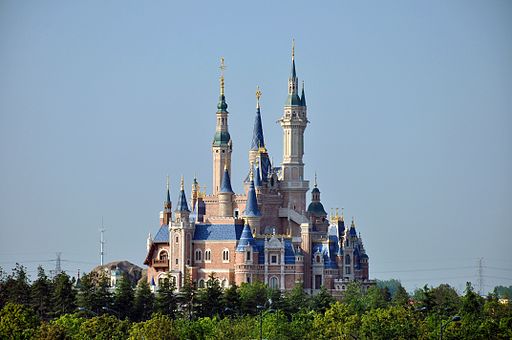If you don’t live in a hole you certainly heard about the grand opening of the Shanghai Disney Resort – an impressive 963-acres pegged to be the future of the Disney theme parks franchise.
With the official announcement came a flurry of discussion online, as well as virtual snapshots and POV videos of rides, attractions and amenities. Game on!
A strategy that Disney has applied to all of its resorts – and which can be applied to other resorts as well as facilities, parks and grounds of just about any purpose – is the use of stunning 3D interactive maps.
Sure, maps help on-site guests navigate the resort and find information. And no doubt Disney is already working on some map-based location tracking/beacon technology designed to improve the visitors experience.
But there’s also the immeasurable value of giving soon-to-be (or hope-to-be) visitors a way to explore the resort online, plan out their visit, and get super excited!
After all, a big part of the fun of a Disney visit is the anticipation, right?
Check out the Shanghai Disney interactive resort map.
Zoom in close and you’ll be impressed by the detail of the buildings, grounds, and attractions – particularly the famous Enchanted Storybook Castle. (Photo Courtesy of Fayhoo)
The Shanghai Disney Resort’s 3D interactive map includes the ability to explore the full Disney Shanghai Resort, Disneytown shops, dining and The Lion King drama (How do you say “hakuna matata” in Mandarin?), Wishing Star Park, Shanghai Disneyland Hotel, the Toy Story Hotel, and more to come.
There are a lot of lessons that can be learned by watching how cutting-edge companies like Disney use 3D mapping, wayfinding tools, virtual tours, and interactive media to engage and assist their visitors.
Here are a few:
Certain people are more comfortable visiting a location when they have seen an interactive map.
They can now visualize the layout, helping them get oriented and navigate their way around. This certainly applies to resorts where the often large quantities of people can be disorienting. But it also applies to health centers – helping patients and other visitors reduce overall anxiety about an upcoming visit. Convention centers, hotels, parks, and many other locations can benefit from the use of interactive maps as a powerful digital marketing and engagement tool.
Interactive maps can serve a number of different purposes.
Digital, print and other media – the opportunities are many. If you jump around on the Shanghai Disney Resort site, you’ll notice how Disney integrates map snapshots. Look down the right side of the TRON Lightcycle Power Run web page and you’ll see it. Clicking on that snapshot takes you to the larger map, where you can see the TRON ride in the context of the full resort’s layout, and also click to open a text bubble with information about the ride such as minimum height, open/close times, and more.
Often anticipated vs. actual interactive map usage is quite different.
Sure, guests, on-site are accessing the map on their smartphones to find their way around, and soon-to-be guests are checking things out from home to plan their visit. But it’s common to find that staff, vendors (e.g. deliveries and service), event planners, tour organizers – among many others – will be big fans of your interactive map, too.
Our recently announced atlas3D interactive mapping and media platform was designed specifically for these applications. atlas3D 3D mapping and interactive media software makes it incredibly easy for one or an army of administrators to present your space in stunning detail and with engaging media, allowing guests, visitors and customers to explore your space.
We’d welcome the chance to provide a demo profiling how facilities like yours – from health centers, arenas, resorts, transit centers, senior living communities, economic development agencies, commercial real estate firms, and more, are better meeting the needs of their visitors, staff and others with atlas3D’s unique interactive map and media capabilities.

